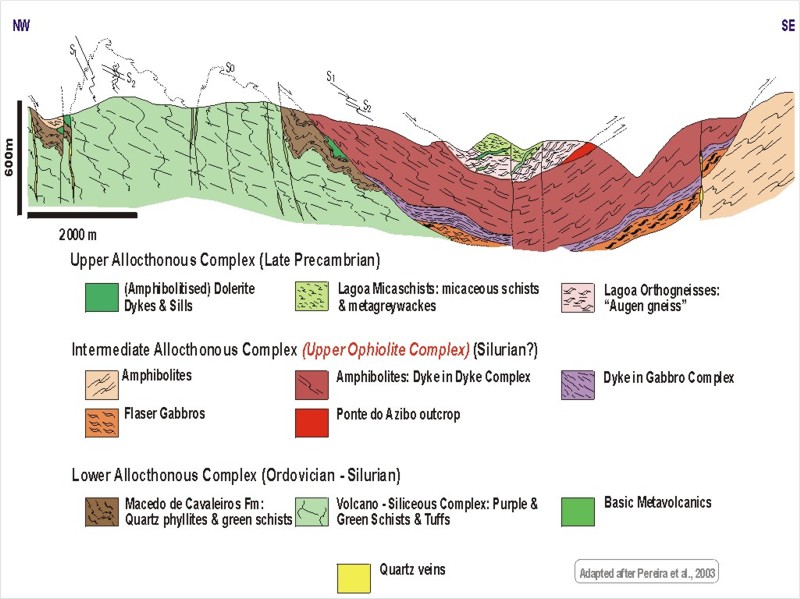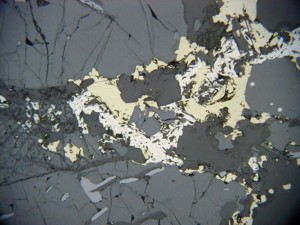
From the guidelines, as from January 2013"People do not need to wait for permission to log your EarthCache. Requiring someone to wait is not supported by the EarthCache guidelines. People should send their logging task answers to you, then log your EarthCache. When you review their logging task answers, if there is a problem, you should contact them to resolve it. If there is no problem, then their log simply stands."

Chalcopyrite (CuFeS2)
 The name is pronounced kal-co-pie-right-ee. Chalcopyrite is a copper iron sulphide mineral that crystallizes in the tetragonal system. It has the chemical composition CuFeS 2. It has a brassy to golden yellow color and a hardness of 3.5 to 4 on the Mohs scale. Its streak is diagnostic as green tinged black.
The name is pronounced kal-co-pie-right-ee. Chalcopyrite is a copper iron sulphide mineral that crystallizes in the tetragonal system. It has the chemical composition CuFeS 2. It has a brassy to golden yellow color and a hardness of 3.5 to 4 on the Mohs scale. Its streak is diagnostic as green tinged black.
On exposure to air, chalcopyrite oxidises to a variety of oxides, hydroxides and sulfates. Associated copper minerals include the sulfides bornite (Cu 5FeS 4), chalcocite (Cu 2S), covellite (CuS), digenite (Cu 9S 5); carbonates such as malachite and azurite, and rarely oxides such as cuprite (Cu 2O). Chalcopyrite is rarely found in association with native copper.
Identification 
Chalcopyrite is often confused with pyrite, although the latter has a cubic and not a tetragonal crystal system is much whiter in colour. Further, chalcopyrite is often massive, rarely crystalline, and less brittle. Chalcopyrite is also a darker yellow in color, with a greenish tinge and diagnostic greasy lustre.
Due to its color and high copper content, chalcopyrite has often been referred to as "yellow copper".
Chemistry
Natural chalcopyrite has no solid solution series with any other sulfide minerals. There is limited substitution of Zn with Cu despite chalcopyrite having the same crystal structure as sphalerite.
However, it is often contaminated by a variety of other trace elements such as Co, Ni, Mn, Zn and Sn substituting for Cu and Fe. Se, Fe and As substitute for sulfur, and trace amounts of Ag, Au, Pt, Pd, Pb, V, Cr, In, Al and Sb are reported.
It is likely many of these elements are present in finely intergrown minerals within the chalcopyrite crystal, for instance lamellae of arsenopyrite representing As, molybdenite representing Mo, etcetera.
Paragenesis
Chalcopyrite is present within many ore bearing environments via a variety of ore forming processes.
Chalcopyrite is present in volcanogenic massive sulfide ore deposits and sedimentary exhalative deposits, formed by deposition of copper during hydrothermal circulation. Chalcopyrite is concentrated in this environment via fluid transport.
Porphyry copper ore deposits are formed by concentration of copper within a granite stock during the ascent and crystallisation of magma. Chalcopyrite in this environment is produced by concentration within a magma system.
Occurrence
Chalcopyrite is one of the most important copper ores. Chalcopyrite ore occurs in a variety of ore types, from huge masses as at Timmins, Ontario, to irregular veins and disseminations associated with granitic to dioritic intrusives as in the porphyry copper deposits of Broken Hill, the American cordillera and the Andes. Closer to home, the Neves Corvo Mine is another example of a worldwide copper producer and the Panasqueira Mine is renowned for perfectly formed crystals of chalcopyrite.
Chalcopyrite may also be found in coal seams associated with pyrite nodules, and as disseminations in carbonate sedimentary rocks. (source)

The cache:
This cache will take you to the confluence of the Sabor and Azibo Rivers near Mogadouro in Trás-os-Montes. The locality is known in local geological circles as the Ponte do Azibo (Azibo Bridge) outcrop. Geologically, the Ponte do Azibo outcrop is an unexplained phenomenon as no one has yet provided an adequate model for its occurrence at this particular site.
The outcrop is wedge-shaped, small, measuring no more than 30 m across and is characterized by a rust-coloured sliver of amphibolite that is mineralized with chalcopyrite and also contains pyrite, ilmenite and marcasite. This mineralized wedge is anomalous in the fact that it contacts in both footwall and hanging wall with rocks belonging to the Morais ophiolite complex.
Claiming the cache:
You have to visit the outcrop and sketch the outcrop pattern on a piece of paper clearly showing the mineralised wedge of amphibolite in the section so that its form is clearly seen. Then just contact me via GC.com, send me the sketch to me via mail. Please no photos of the outcrop in your logs so as to spare the field work for other cachers.
Note that the site is a sensitive one, so please enjoy it, collect samples (there are plenty already broken on the ground) but don’t destroy the place and leave it for others to enjoy.

A calcopirite é o mineral de cobre mais amplamente distribuído e uma das principais fontes de obtenção do mesmo.
É composto de sulfureto de cobre-ferro (CuFeS 2) que cristaliza no sistema tetragonal . Com uma dureza na escala de Mohs entre 3,5 e 4. Seu peso específico varia entre 4,1 e 4,3.
Tem brilho metálico, de coloração amarelo. Encontrado frequentemente em rochas muito antigas, muitas vezes associado com a pirite ou sulfureto de ferro.
É por vezes confundido com a pirite porém a sua cor é mais amarelada.

A cache:
A procura desta cache vai-te levar ao afloramento da Ponte do Azibo perto de Mogadouro em Trás-os-Montes a cerca de 150 m da confluência dos rios Sabor e Azibo. A Ponte do Azibo, como é conhecido este afloramento pelos geólogos Portugueses, e não só, é um afloramento algo estranho porque ainda ninguém conseguiu explicar devidamente como é que isto veio aqui parar.
Para vos dar aconhecer este afloramento é preciso dizer que o afloramento não mede mais do que 30 m em largura, está na forma de cunha "entalado" entre unidades que pertecem ao Ofiolito de Morais é é extremanente rico em calcopirite, com pirite, ilmenite e marcassite acessória, o que lhe confere, ao ar livre, uma aspecto ferrugento. Refere-se que nas redondezas não é conhecida semelhante ocorrência.
Este tipo de mineralização é extremamente importante e um dos exemplos emblemáticos nacionais, é a exploração de cobre no Alentejo na Mina de Neves Corvo que explora massas de calcopirite maciça para a produção do cobre.
Devido à natureza sensível deste local, para logar um found nesta cache preciso que visites o local e desenhes num papel a morfologia do afloramento mostrando claramente a relação entre a cunha mineralizada e o anfibolito e as restantes litologias. Contacta-me depois via o GC.com para me enviares o desenho. Caso o teu desenho corresponda à verdade podes logar a cache. Se houver algum problema logo entarrei em contacto.Não coloques fotos do afloramento no teu log de forma a poupar trabalho de campo para os cachers seguintes.
A ponte do Azibo é um óptimo local onde se apanhar amostras mineralizadas com calcopirite - há muitas já partidas no chão. Trata este local com o devido respeito, não o destruas e disfruta de uma paisagem envolvente soberba.
Happy earthcaching!
 The most exciting way to learn about the Earth and its processes is to get into the outdoors and experience it first-hand. Visiting an Earthcache is a great outdoor activity the whole family can enjoy. An Earthcache is a special place that people can visit to learn about a unique geoscience feature or aspect of our Earth. Earthcaches include a set of educational notes and the details about where to find the location (latitude and longitude). Visitors to Earthcaches can see how our planet has been shaped by geological processes, how we manage the resources and how scientists gather evidence to learn about the Earth. To find out more click HERE.
The most exciting way to learn about the Earth and its processes is to get into the outdoors and experience it first-hand. Visiting an Earthcache is a great outdoor activity the whole family can enjoy. An Earthcache is a special place that people can visit to learn about a unique geoscience feature or aspect of our Earth. Earthcaches include a set of educational notes and the details about where to find the location (latitude and longitude). Visitors to Earthcaches can see how our planet has been shaped by geological processes, how we manage the resources and how scientists gather evidence to learn about the Earth. To find out more click HERE.

______________________________________________________________________________
